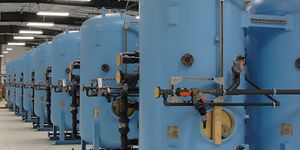Megawatt motor to make electric planes
Thanks to the efforts of engineers at Massachusetts Institute of Technology (MIT), an electric-powered aircraft could be possible in the future. The team plans to reveal a recently developed, 1-megawatt engine at the upcoming American Institute of Aeronautics and Astronautics—Electric Aircraft Technologies Symposium (EATS) at the Aviation conference this month.
The electrification of the transportation grid has emerged as a key public policy initiative in the race to reduce carbon emissions and reduce the effects of climate change on the planet. The production of electric vehicles tends to be the primary focus that captures the publics attention. But aircrafts also produce a significant amount of pollution. In fact, air traffic was responsible for roughly 2% of all global carbon emissions, and have risen significantly in the past decade, faster than other means of transportation. Can we make airplanes electric too?
The answer, currently, is theoretically. Powering an electric aircraft requires a power source that can produce a significant amount of energy. Some attempts have been made at developing motors that can power smaller planes, which end up producing several hundreds of kilowatts of power in order to fly. Powering commercial airlines or cargo planes is a significant difference of degree, with some estimates suggest that an engine that can produce megawatts of power is required to power these types of plans. MIT researchers may have taken us a step closer to closing this gap.
https://www.youtube.com/watch?v=Vk_BEGCFWv0
Through initial testing, the MIT team showed that their engine could produce a single megawatt of energy, an important step forward. Researchers expect that the motor could be powered by a number of sources, including batteries or materials like hydrogen.
While these efforts represent a productive step forward, researchers still highlight the challenges ahead. Chief among them, this type of engineering is not easy. It involves pushing the envelope at almost every turn such as rethinking what’s possible. For example, many conventional electric engines use copper coils and a magnetic rotor that becomes bigger for bigger transportation units, which makes the engine weigh more. On top of that, larger motors need more material to keep the engine cool, which means more material and more weight.
And when it comes to planes, lighter is better.
Sources: Science Daily; EATS; IEA








